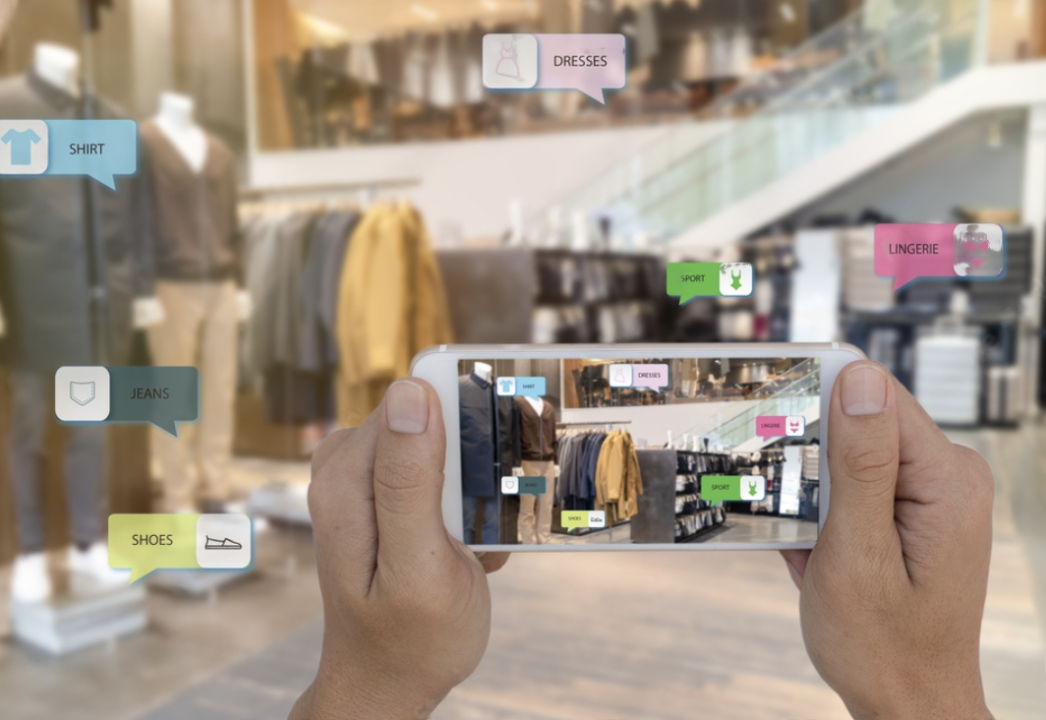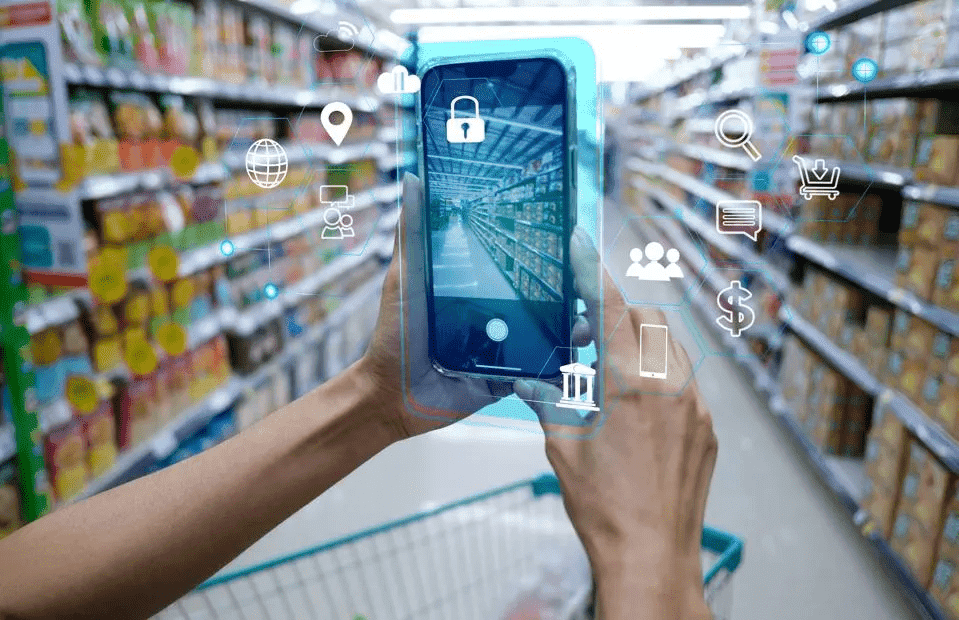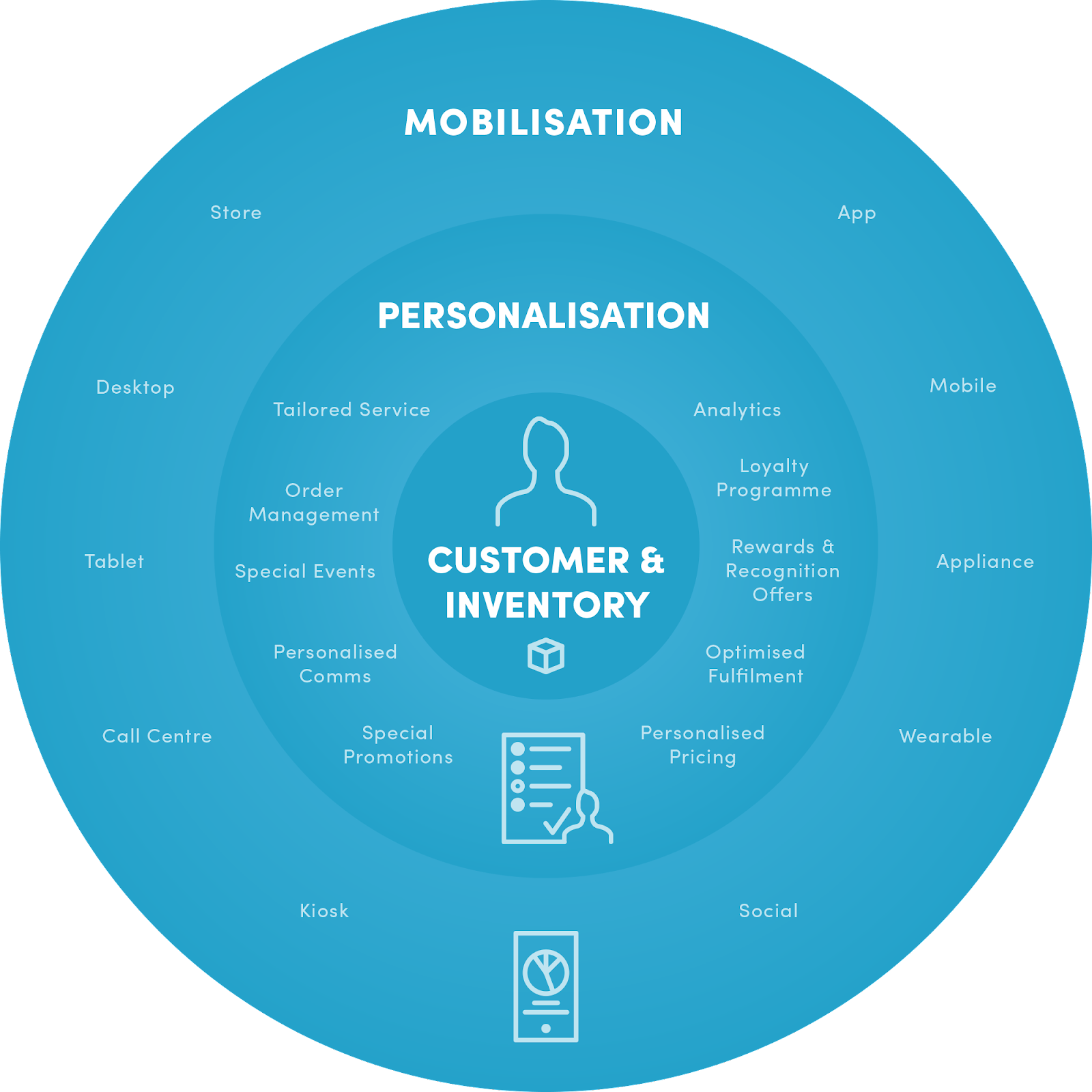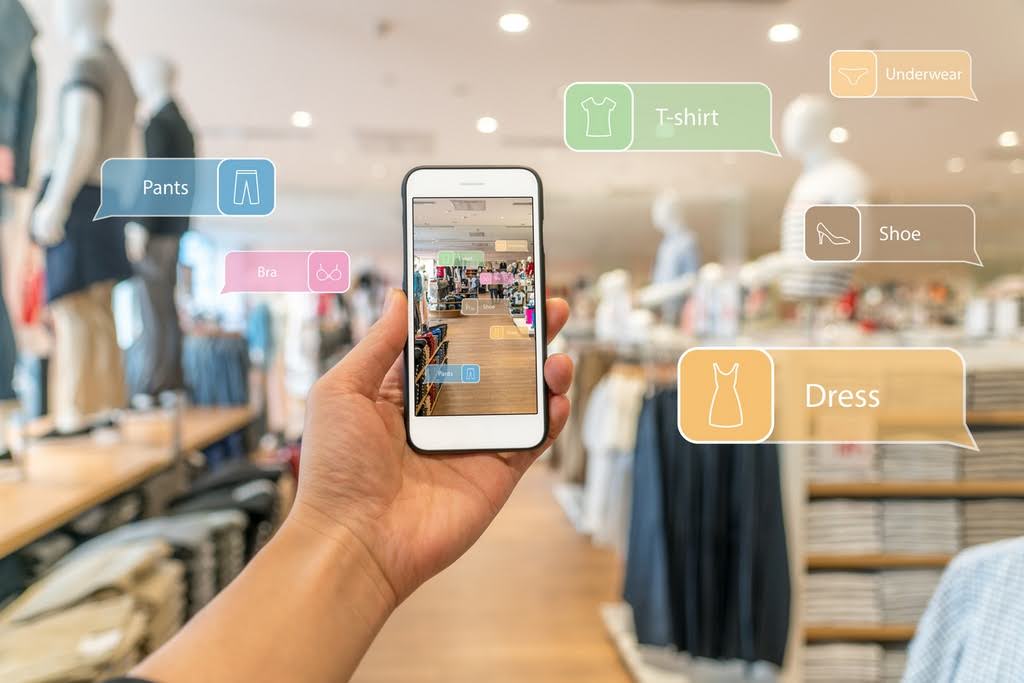To understand the significance of retail omnichannel trends, it’s crucial to examine the broader retail landscape. Traditional brick-and-mortar stores are no longer the sole drivers of commerce, as online platforms continue to gain traction, fueled by advancements in technology and shifts in consumer behavior. This dynamic environment presents both challenges and opportunities for retailers, prompting them to rethink their strategies and embrace innovation to thrive in an increasingly interconnected world.
In this blog post, we delve deep into the realm of retail omnichannel trends, exploring their definition, discussing their importance in shaping the future of retail, and providing an overview of the current retail landscape. From the evolution of omnichannel retailing to emerging trends and best practices, we will examine how businesses can navigate this transformative journey to stay ahead in the ever-evolving retail landscape. Join us as we unravel the intricacies of retail omnichannel trends and discover the keys to success in the age of seamless commerce.
Table of Contents
- The Evolution of Retail Omnichannel Trends
- Current State of Retail Omnichannel Trends
- Emerging Retail Omnichannel Trends
- Challenges and Obstacles in Following Retail Omnichannel Trends
- Future Outlook: Predictions for Retail Omnichannel Trends
- Best Practices for Retailers to Thrive in an Omnichannel Environment
The Evolution of Retail Omnichannel Trends
As we continue to navigate the ever-changing retail landscape, businesses must embrace innovation and adaptability to stay ahead of the curve and deliver exceptional experiences to their customers across all channels. In this comprehensive exploration, we take a look into the historical context of omnichannel retail, examine key milestones in its evolution, and analyze the profound impact of digital transformation on the retail industry.
Historical Context: How Omnichannel Retail Came to Be
The roots of omnichannel retail can be traced back to the early days of eCommerce and the emergence of multichannel strategies. Traditional retail was characterized by distinct silos, with separate channels for brick-and-mortar stores, catalogs, and telephone orders. However, as the internet gained prominence in the late 20th century, retailers began to recognize the potential of online commerce to reach a broader audience and offer greater convenience to customers.
The concept of multichannel retailing emerged as retailers sought to establish a presence across various channels, including physical stores and eCommerce platforms. While this represented a significant step forward in catering to evolving consumer preferences, it also introduced challenges related to channel fragmentation and inconsistency in the customer experience.

As technology continued to advance, paving the way for seamless connectivity and integration, the concept of omnichannel retailing began to take shape. Unlike multichannel approaches that focused on individual channels operating in isolation, omnichannel retail sought to create a unified and cohesive experience for customers across all touchpoints.
Key Milestones in Retail Omnichannel Trends
The journey towards omnichannel retail has been marked by several key milestones that have shaped the way businesses interact with their customers. One of the earliest examples of omnichannel integration can be seen in the rise of click-and-mortar retailers, which combined the convenience of online shopping with the tactile experience of in-store browsing.
The advent of mobile technology further accelerated the transition to omnichannel retail, empowering consumers to engage with brands anytime, anywhere, through their smartphones and tablets. Retailers began to invest in mobile-responsive websites and dedicated apps, offering seamless shopping experiences across devices.

Another significant milestone in the evolution of omnichannel retail was the integration of inventory management systems, enabling real-time visibility of product availability across all channels. This allowed retailers to fulfill orders more efficiently, whether they originated online, in-store, or through other channels, thereby reducing stockouts and improving customer satisfaction.
The proliferation of social media platforms also played a crucial role in shaping retail omnichannel trends, providing new avenues for customer engagement and personalized marketing. Retailers began to leverage social media channels to showcase products, gather feedback, and interact with customers in more meaningful ways, blurring the lines between online and offline shopping experiences.
Impact of Digital Transformation on Retail
Digital transformation has been a driving force behind the evolution of retail omnichannel trends, reshaping every aspect of the industry from supply chain management to customer engagement. The widespread adoption of eCommerce platforms has fundamentally changed the way consumers discover, research, and purchase products, leading to a shift in power dynamics between retailers and customers.
With the rise of online marketplaces and aggregator platforms, consumers now have access to an unprecedented variety of products and services, often at competitive prices. This has intensified competition among retailers, prompting them to differentiate themselves through enhanced customer experiences and personalized offerings.

Moreover, digital technologies such as artificial intelligence (AI), machine learning (ML), and data analytics have empowered retailers to gain deeper insights into consumer behavior and preferences. By harnessing the power of data, retailers can deliver targeted marketing campaigns, personalized recommendations, and tailored promotions, thereby enhancing customer engagement and driving sales.
Furthermore, advancements in logistics and fulfillment technologies have enabled retailers to offer faster and more flexible delivery options, including same-day and next-day delivery. This has raised the bar for customer expectations, with consumers increasingly demanding convenience, speed, and reliability in their shopping experiences.
Current State of Retail Omnichannel Trends
The current state of retail omnichannel trends reflects a rapidly evolving landscape where consumers expect seamless and personalized experiences across multiple channels. By embracing omnichannel strategies and leveraging the latest technologies, retailers can position themselves for success in an increasingly interconnected world. From unified commerce platforms to personalized marketing initiatives, the key to thriving in retail omnichannel trends lies in understanding and meeting the evolving needs and preferences of today’s consumers. In this in-depth exploration, we’ll examine the current state of retail omnichannel trends, including the level of adoption in the industry and the popular strategies and technologies driving omnichannel retailing forward.
Omnichannel Adoption in the Retail Industry
The adoption of omnichannel strategies in the retail industry has reached a critical juncture, with businesses of all sizes recognizing the importance of delivering a cohesive and consistent customer experience across multiple channels. According to recent studies, a significant majority of retailers have either implemented or are planning to implement omnichannel initiatives within their organizations.
Shift in Customer Behavior
One of the primary drivers behind the widespread adoption of retail omnichannel trends is the changing behavior of consumers. Today’s shoppers expect the flexibility to research, browse, and purchase products through a variety of channels, including websites, mobile apps, social media platforms, and physical stores. By embracing omnichannel strategies, retailers can meet these evolving expectations and provide customers with the convenience and flexibility they desire.
Recent studies underscore the significance of this shift, revealing that a substantial majority of retailers have either implemented or are actively planning to deploy omnichannel strategies within their organizations. This trend is not merely a response to market pressures; it’s a strategic imperative driven by the changing expectations of today’s consumers.

Indeed, contemporary shoppers demand nothing less than a seamless, cohesive experience across all touchpoints. Whether browsing online, engaging via social media, or visiting physical stores, customers expect consistency, convenience, and personalized interactions. Embracing omnichannel strategies isn’t just about meeting these expectations — it’s about exceeding them, creating experiences that delight and inspire loyalty.
COVID-19 and its Impact on Retail Omnichannel Trends
More than just normal changes in customer behavior, the COVID-19 pandemic has accelerated the shift towards omnichannel retailing, as social distancing measures and lockdowns have forced consumers to rely more heavily on online channels for their shopping needs. With social distancing measures and lockdowns reshaping consumer behavior, reliance on online channels surged. Retailers, compelled to adapt to this new reality, hastened their digital transformation efforts. Investments in eCommerce platforms, contactless payment solutions, and innovative fulfillment options like curbside pickup became imperative to meet the surging demand for omnichannel experiences.
This pandemic-induced acceleration isn’t merely a short-term reaction; it’s a fundamental recalibration of the retail landscape. Retailers have come to recognize the resilience and adaptability of omnichannel strategies in the face of uncertainty. They’ve seen firsthand the value of diversifying their sales channels, strengthening customer relationships, and future-proofing their businesses against unforeseen disruptions.

As we navigate the post-pandemic world, the importance of omnichannel adoption in the retail industry will only continue to grow. It’s no longer a question of whether retailers should embrace omnichannel strategies but how effectively they can execute them. Those who successfully navigate this paradigm shift will not only survive but thrive in the dynamic and competitive marketplace of tomorrow. They’ll forge deeper connections with customers, drive sustainable growth, and cement their position as leaders in the retail landscape. In essence, the adoption of retail omnichannel trends isn’t just a strategy — it’s a strategic imperative for future success.
Popular Omnichannel Retailing Strategy and Technologies
In order to succeed in today’s omnichannel landscape, retailers must leverage a variety of strategies and technologies to create seamless and engaging experiences for their customers. To navigate this dynamic terrain effectively, retailers must leverage a diverse array of strategies and technologies that seamlessly integrate online and offline channels while delivering personalized experiences to their customers.
Unified Commerce
Unified commerce platforms are indispensable tools for retailers seeking to navigate the complexities of retail omnichannel trends. These platforms serve as the backbone of a seamless and integrated retail operation, consolidating disparate systems and processes into a centralized hub. By unifying inventory management, order fulfillment, and customer data, retailers can break down silos between online and offline channels, providing a cohesive experience for customers regardless of how they choose to shop.
At the heart of unified commerce platforms lies the concept of real-time visibility. By aggregating data from various sources and channels, these platforms offer retailers immediate insights into inventory levels, order statuses, and customer preferences. This real-time visibility empowers retailers to optimize their operations, making informed decisions that drive efficiency and enhance the customer experience. For example, retailers can proactively manage inventory levels across all channels, ensuring that products are available when and where customers demand them.
One of the key benefits of unified commerce platforms is their ability to streamline order fulfillment processes. With all relevant data accessible from a single system, retailers can fulfill orders more efficiently and accurately. Whether an order originates from a website, mobile app, or physical store, retailers can leverage unified commerce platforms to seamlessly coordinate fulfillment, reducing the risk of errors and delays. This ensures that customers receive their orders promptly and accurately, enhancing satisfaction and loyalty.

Moreover, unified commerce platforms play a crucial role in mitigating the risk of stockouts. By providing retailers with real-time visibility into inventory levels across all channels, these platforms enable proactive inventory management. Retailers can monitor stock levels, identify potential shortages, and take preemptive action to replenish inventory before it runs out. This ensures that customers always have access to the products they desire, regardless of how they choose to shop.
In essence, unified commerce platforms serve as the linchpin of successful omnichannel retailing, enabling retailers to deliver seamless and integrated experiences to their customers. By consolidating disparate systems and processes into a centralized hub, these platforms empower retailers to optimize their operations, enhance the customer experience, and drive business growth in an increasingly interconnected world.
Personalization
Implementing personalized marketing and targeting techniques is a cornerstone of recent retail omnichannel trends. With consumers expecting tailored experiences across all touchpoints, retailers must leverage customer data and predictive analytics to deliver targeted promotions, recommendations, and offers. By understanding individual preferences, purchase history, and browsing behavior, retailers can create highly personalized interactions that resonate with customers on a deeper level.
The foundation of personalized marketing lies in the robust collection and analysis of customer data. Retailers gather data from various sources, including online transactions, social media interactions, and loyalty programs, to build comprehensive customer profiles. This data provides valuable insights into customer preferences, behavior patterns, and lifecycle stages, enabling retailers to segment their audience and tailor their marketing efforts accordingly.
Predictive analytics plays a crucial role in personalized marketing strategies, enabling retailers to anticipate customer needs and preferences before they arise. By applying machine learning algorithms to historical data, retailers can identify patterns and trends that inform targeted campaigns and recommendations. For example, retailers can predict which products a customer is likely to purchase based on their past behavior, enabling them to deliver relevant offers and promotions at the right time and place.

Personalized marketing extends beyond traditional channels to encompass emerging platforms and technologies. Retailers leverage email marketing, mobile apps, social media, and personalized website experiences to engage customers with relevant content and offers.
Technologies such as artificial intelligence (AI) and machine learning (ML) play a crucial role in enabling personalized marketing initiatives, as they allow retailers to analyze vast amounts of data in real-time and identify patterns and trends that can inform targeted marketing campaigns. From product recommendations to personalized email marketing, AI-powered tools can help retailers deliver highly relevant and engaging experiences to their customers across all channels.
The benefits of personalized marketing are abundant. By delivering relevant and timely messages to customers, retailers can increase engagement, drive loyalty, and ultimately, boost sales. Moreover, personalized marketing fosters a deeper connection between the brand and the customer, building trust and loyalty over time. Customers are more likely to return to a retailer that understands their needs and preferences and delivers personalized experiences that exceed their expectations.
All in all, personalized marketing and targeting techniques are essential components of successful omnichannel retailing. By leveraging customer data and predictive analytics, retailers can create highly personalized experiences that resonate with customers and drive business growth. In an increasingly competitive retail landscape, personalized marketing is not just a strategy — it’s a necessity for retailers looking to thrive in the omnichannel era.
Application of Technologies
Mobile commerce has become a driving force behind the advancement of omnichannel retailing. The widespread adoption of smartphones and tablets has transformed the way consumers shop, giving them unprecedented access to products and services anytime, anywhere. With the convenience of mobile devices at their fingertips, consumers expect retailers to provide seamless and intuitive shopping experiences across all channels, including mobile platforms.
As a result, retailers must prioritize the optimization of their websites and mobile apps for mobile users. This involves designing responsive and user-friendly interfaces that adapt to different screen sizes and resolutions. By ensuring consistency in design and functionality across devices, retailers can provide a cohesive experience for customers, regardless of the device they use to access their digital storefront.
Moreover, mobile optimization goes beyond just aesthetics—it’s about streamlining the entire shopping journey for mobile users. Retailers must optimize page load times, simplify navigation, and minimize friction in the checkout process to create a frictionless shopping experience on mobile devices. This requires a deep understanding of mobile user behavior and preferences, as well as ongoing testing and optimization to fine-tune the mobile shopping experience.

In addition to optimizing their own digital properties, retailers can also leverage mobile technologies to enhance the in-store shopping experience. For example, retailers can deploy mobile point-of-sale (mPOS) systems to enable seamless checkout experiences in-store, allowing customers to pay for their purchases using their mobile devices. Furthermore, retailers can leverage location-based services and push notifications to deliver personalized offers and promotions to customers based on their proximity to physical stores.
Overall, mobile commerce represents a significant opportunity for retailers to drive omnichannel engagement and sales. By prioritizing mobile optimization and leveraging mobile technologies to enhance the shopping experience, retailers can meet the evolving needs and expectations of today’s mobile-first consumers. As mobile devices continue to play an increasingly central role in the retail journey, retailers must adapt and innovate to capitalize on the opportunities presented by mobile commerce.
Emerging Retail Omnichannel Trends
In this comprehensive exploration of emerging retail omnichannel trends, we have four key areas driving innovation and transforming the way businesses engage with their customers. From personalization and customer experience enhancement to the integration of cutting-edge technologies like augmented reality (AR) and virtual reality (VR), we’ll examine how retailers are adapting to meet the evolving needs and preferences of today’s consumers.
Personalization and Customer Experience Enhancement
One of the most significant retail omnichannel trends is the focus on personalization and customer experience enhancement. Today’s consumers expect tailored recommendations, relevant promotions, and seamless interactions across all touchpoints, whether online or offline. By leveraging data analytics and machine learning algorithms, retailers can gain insights into individual preferences and behaviors, allowing them to deliver personalized experiences that resonate with their customers.
Personalization stands as a pivotal strategy for retailers aiming to carve out a competitive edge in today’s fiercely contested retail landscape. It encompasses a suite of techniques ranging from personalized product recommendations to targeted marketing campaigns, all designed to foster deeper engagement and loyalty among consumers. By leveraging the wealth of customer data at their disposal, retailers can craft hyper-targeted offers and promotions tailored to individual preferences and behaviors, thereby increasing the likelihood of conversion and fostering repeat purchases.

The foundation of effective personalization lies in robust data analytics and customer insights. Retailers collect and analyze vast troves of data, encompassing online transactions, browsing behavior, and demographic information, to construct comprehensive customer profiles. Armed with these insights, retailers can identify patterns, preferences, and purchase histories to deliver personalized experiences across all touchpoints.
In the digital realm, personalization takes center stage in marketing efforts. Retailers deploy sophisticated algorithms and machine learning models to predict consumer preferences and behavior, enabling them to deliver highly relevant and timely offers and recommendations. From personalized email campaigns to targeted social media ads, retailers can engage consumers with content that resonates on a personal level, driving higher conversion rates and maximizing ROI.
Yet, personalization extends beyond the confines of the digital realm. Forward-thinking retailers are leveraging technology to enhance in-store experiences through personalized interactions and recommendations. By integrating customer data with in-store technologies such as beacons and RFID tags, retailers can deliver personalized product recommendations and promotions to shoppers as they browse physical aisles. This seamless integration of online and offline data enables retailers to create cohesive and immersive experiences that blur the lines between digital and physical retail.

The benefits of personalization are countless. By catering to individual preferences and needs, retailers can forge deeper connections with customers, fostering loyalty and advocacy. Moreover, personalized experiences drive higher engagement and conversion rates, ultimately leading to increased sales and revenue. In an era where consumers expect personalized interactions at every touchpoint, retailers that prioritize personalization stand poised to thrive in the competitive retail landscape.
Integration of Augmented Reality (AR) and Virtual Reality (VR)
Among the emerging retail omnichannel trends is the integration of augmented reality (AR) and virtual reality (VR) technologies to enhance the shopping experience. AR and VR offer immersive and interactive experiences that allow consumers to visualize products in real-world environments and make more informed purchasing decisions. From virtual try-on experiences for apparel and accessories to interactive product demonstrations for electronics and home furnishings, AR and VR technologies are revolutionizing the way consumers shop.
Augmented Reality (AR) and Virtual Reality (VR) technologies are revolutionizing the retail landscape, offering retailers powerful tools to create immersive and memorable experiences for consumers. Retailers are increasingly leveraging AR and VR to bridge the gap between online and offline shopping, offering customers the opportunity to interact with products in virtual environments. This capability addresses a longstanding challenge in eCommerce — the inability of customers to physically touch and feel products before making a purchase.
By incorporating AR and VR experiences into their digital platforms, retailers can provide customers with a more tactile and engaging shopping experience. For example, customers can use AR-enabled mobile apps to virtually try on clothing or accessories, visualize furniture in their own homes, or test out makeup shades in real-time. Similarly, VR experiences can transport customers to virtual showrooms or stores, allowing them to explore products and environments in a highly immersive manner.
These immersive experiences not only enhance the online shopping experience but also drive offline sales by encouraging customers to visit physical stores. For instance, customers who try on clothing virtually may be more inclined to visit a store to make a purchase in person, confident in their selection after experiencing the product virtually. Likewise, VR-powered virtual showrooms can entice customers to visit brick-and-mortar locations to see products in person or seek assistance from knowledgeable staff.

Moreover, AR and VR experiences can be seamlessly integrated across multiple channels, providing a consistent and cohesive shopping experience regardless of the platform or device used. Whether browsing on a website, mobile app, or in-store kiosk, customers can access the same immersive AR and VR experiences, fostering brand consistency and driving engagement. This omnichannel approach enables retailers to meet customers where they are, offering a unified experience that transcends physical and digital boundaries.
Overall, AR and VR technologies hold immense potential for retailers seeking to differentiate themselves in a crowded marketplace. By offering immersive and interactive experiences that blur the lines between online and offline shopping, retailers can drive both online engagement and offline foot traffic, ultimately leading to increased sales and customer satisfaction. As AR and VR continue to evolve, retailers that embrace these technologies stand poised to reshape the future of retail.
The Rise of Voice Commerce and Conversational Commerce
Voice commerce and conversational commerce take place among the emerging retail omnichannel trends, driven by advancements in natural language processing (NLP) and voice recognition technologies. With the rise of virtual assistants like Amazon Alexa, Google Assistant, and Apple Siri, consumers can now shop and make purchases using voice commands, simplifying the shopping process and enabling hands-free transactions.
Voice commerce and conversational commerce represent a paradigm shift in the way retailers engage with consumers, offering a new avenue for frictionless shopping experiences. As the demand for convenience and efficiency continues to rise, retailers are recognizing the potential of voice-enabled technologies to meet these evolving consumer expectations. By integrating voice-enabled capabilities into their eCommerce platforms and mobile apps, retailers can provide customers with a seamless and intuitive shopping experience that streamlines the purchasing process.
One of the key benefits of voice commerce is its ability to simplify product searches and information retrieval. With voice-activated product searches, customers can simply speak their queries, eliminating the need to type keywords or navigate through menus. This not only saves time and effort but also enhances accessibility for users who may have difficulty typing or navigating traditional interfaces. Moreover, voice-enabled product recommendations and personalized suggestions can help customers discover new products and make informed purchase decisions based on their preferences and past behavior.

In addition to product searches, voice commerce is transforming the checkout process, making it more convenient and efficient for customers to complete transactions. Voice-controlled checkout processes enable customers to place orders and make payments using voice commands, eliminating the need to manually enter payment details or navigate through checkout forms. This frictionless checkout experience reduces cart abandonment rates and increases conversion rates, driving higher sales and revenue for retailers.
Conversational commerce takes voice commerce a step further by enabling natural language interactions between customers and brands. Through chatbots and virtual assistants, retailers can engage customers in personalized conversations, providing assistance, answering questions, and guiding them through the purchasing journey. These conversational interfaces mimic human-like interactions, creating a more engaging and interactive shopping experience for customers.
Overall, voice commerce and conversational commerce are reshaping the way consumers interact with brands and make purchase decisions. By leveraging voice-enabled technologies, retailers can offer customers a seamless and intuitive shopping experience that meets their growing expectations for convenience and efficiency. As voice commerce continues to evolve, retailers that embrace these technologies stand to gain a competitive advantage and drive greater customer engagement and loyalty.
Sustainability and Ethical Considerations as Retail Omnichannel Trends
In addition to personalization and technology-driven innovations, sustainability and ethical considerations are becoming increasingly important factors in retail omnichannel trends. Today’s consumers are more conscious of the environmental and social impact of their purchasing decisions, prompting retailers to prioritize sustainability and ethical sourcing practices in their operations.
Sustainability and ethical considerations have become increasingly significant as one of the retail omnichannel trends, shaping how businesses operate and engage with consumers. Retailers are embracing sustainable practices across various facets of their operations, from sourcing raw materials to product packaging and distribution. By partnering with eco-friendly suppliers and adopting sustainable manufacturing processes, retailers can reduce their environmental impact and contribute to the preservation of natural resources. Moreover, by prioritizing ethical labor practices and fair trade initiatives, retailers demonstrate their commitment to social responsibility and ethical standards.
One of the key areas where retailers are making strides in sustainability is in their supply chain management. By working closely with suppliers who prioritize sustainable and ethical practices, retailers can ensure that their products are sourced responsibly and ethically. This includes considerations such as fair wages, safe working conditions, and environmentally friendly production methods. By aligning with suppliers who share their values, retailers can uphold their commitment to sustainability while also satisfying the growing demand from consumers for ethically sourced products.

In addition to sourcing practices, retailers are also focusing on reducing waste and minimizing their environmental footprint throughout the product lifecycle. This includes implementing initiatives to reduce packaging waste, optimize transportation routes to minimize emissions, and explore innovative recycling and reuse programs. By adopting sustainable packaging solutions, such as biodegradable materials and reusable containers, retailers can significantly reduce their impact on the environment while also appealing to environmentally conscious consumers who prioritize sustainability in their purchasing decisions.
Furthermore, retailers are becoming increasingly transparent about their sustainability efforts and corporate social responsibility initiatives. Through clear communication and reporting, retailers are sharing information about their sourcing practices, environmental initiatives, and community engagement efforts with consumers. By being transparent about their sustainability commitments, retailers build trust and credibility with socially conscious shoppers, who are increasingly seeking out brands that align with their values and principles.
Overall, sustainability and ethical considerations have become integral to the retail industry, driving positive change and shaping consumer preferences. By embracing sustainable practices, adopting ethical sourcing standards, and being transparent about their efforts, retailers can differentiate themselves in the market, build brand loyalty, and contribute to a more sustainable future for generations to come.
Challenges and Obstacles in Following Retail Omnichannel Trends
While the benefits of embracing retail omnichannel trends are evident, businesses face a myriad of challenges and obstacles in implementing and sustaining omnichannel strategies. Following retail omnichannel trends offers significant opportunities for retailers to enhance customer experiences and drive business growth, it also presents formidable challenges and obstacles that must be overcome.
By addressing data integration and management challenges, technological barriers, organizational alignment, and security concerns, retailers can navigate the complexities of omnichannel retailing and unlock the full potential of omnichannel strategies to thrive in an increasingly interconnected world. In this comprehensive exploration, we investigate four key challenges that retailers must overcome to successfully follow retail omnichannel trends.
Data Integration and Management Challenges
One of the primary challenges in following retail omnichannel trends is the complexity of integrating and managing data across multiple channels and systems. Retailers often operate disparate systems for eCommerce, point-of-sale (POS), inventory management, customer relationship management (CRM), and more, leading to siloed data and fragmented insights. Achieving a single view of the customer and real-time visibility into inventory levels requires robust data integration and management capabilities.

Moreover, data quality and consistency issues can arise when integrating data from various sources, leading to inaccuracies and discrepancies that undermine the effectiveness of omnichannel strategies. Retailers must invest in data governance processes, data cleansing tools, and master data management solutions to ensure data integrity and reliability across all channels. Additionally, implementing a centralized data platform or enterprise data warehouse can help streamline data integration and provide a unified source of truth for decision-making.
Technological Barriers and Infrastructure Requirements
Another significant challenge in following retail omnichannel trends is the technological barriers and infrastructure requirements associated with implementing omnichannel strategies. Retailers must have the right technology stack in place to support seamless integration, data sharing, and communication across channels. This often requires investing in new systems, upgrading legacy infrastructure, and implementing middleware solutions to facilitate data exchange between disparate systems.

Additionally, retailers must ensure that their technology infrastructure is scalable, flexible, and adaptable to accommodate future growth and evolving customer demands. This may involve leveraging cloud-based solutions, adopting microservices architecture, and embracing agile development methodologies to enable rapid iteration and innovation. However, navigating the complex landscape of technology vendors, platforms, and solutions can be daunting, requiring careful evaluation and strategic planning.
Organizational Alignment and Cultural Shifts
In addition to technical challenges, following retail omnichannel trends requires organizational alignment and cultural shifts within the retail organization. Successfully implementing omnichannel strategies often requires breaking down silos between departments, fostering collaboration, and promoting a customer-centric mindset across the organization. This may involve restructuring teams, realigning incentives, and empowering employees to take ownership of the omnichannel customer experience.

Moreover, cultural resistance to change can pose a significant barrier to the adoption of omnichannel strategies, particularly in traditional brick-and-mortar retailers with entrenched processes and workflows. Overcoming resistance to change requires effective change management strategies, executive sponsorship, and clear communication of the benefits and rationale behind omnichannel initiatives. By fostering a culture of innovation, agility, and customer obsession, retailers can overcome organizational barriers and drive successful omnichannel transformations.
Security and Privacy Concerns
Finally, security and privacy concerns present significant challenges for retailers following retail omnichannel trends. With the increasing volume and complexity of data collected and shared across channels, retailers must prioritize data security and privacy to protect sensitive customer information and comply with regulatory requirements. Data breaches and cybersecurity threats can have severe consequences for retailers, including reputational damage, financial losses, and legal liabilities.

Retailers must implement robust security measures, such as encryption, access controls, and intrusion detection systems, to safeguard customer data and prevent unauthorized access or data breaches. Moreover, retailers must establish clear policies and procedures for data privacy and consent management, ensuring that customer information is collected, used, and stored in accordance with applicable laws and regulations, such as the General Data Protection Regulation (GDPR) and the California Consumer Privacy Act (CCPA).
Future Outlook: Predictions for Retail Omnichannel Trends
As the retail landscape continues to evolve, it’s essential to anticipate future trends and developments that will shape the way businesses engage with their customers. The future of retail omnichannel trends is characterized by continued innovation, seamless integration, and personalized experiences across all channels. By embracing emerging technologies, leveraging data insights, and expanding omnichannel strategies beyond traditional retail sectors, businesses can stay ahead of the curve and meet the evolving needs and preferences of today’s consumers.
In this forward-looking exploration of retail omnichannel trends, we have four key predictions for the future of omnichannel strategies. From the continued evolution of customer journey mapping to advancements in artificial intelligence (AI) and machine learning (ML), we’ll examine how retailers can stay ahead of the curve and deliver seamless and personalized experiences across all channels.
Continued Evolution of Customer Journey Mapping
One of the most significant trends in retail omnichannel strategies is the continued evolution of customer journey mapping. As consumers engage with brands through an increasing number of touchpoints, from websites and mobile apps to social media and physical stores, retailers must gain a deeper understanding of the customer journey to deliver personalized and contextually relevant experiences.
In the future, customer journey mapping will become even more sophisticated, incorporating advanced analytics, predictive modeling, and real-time data insights to anticipate and respond to customer needs and preferences. Retailers will leverage technologies such as machine learning algorithms and predictive analytics to identify patterns and trends in customer behavior, allowing them to tailor marketing messages, product recommendations, and promotional offers to individual customers at each stage of their journey.

Moreover, customer journey mapping will extend beyond traditional channels to encompass emerging platforms and technologies, such as voice-enabled devices, augmented reality (AR), and virtual reality (VR). By mapping the customer journey across all touchpoints and channels, retailers can create seamless and integrated experiences that drive engagement, loyalty, and conversion.
Seamless Integration of Online and Offline Experiences
Another key prediction for the future of retail omnichannel trends is the seamless integration of online and offline experiences. As the lines between digital and physical retail continue to blur, retailers must create cohesive and unified experiences that bridge the gap between online and offline channels.
In the future, retailers will leverage technologies such as geolocation tracking, beacon technology, and RFID (radio-frequency identification) to enable seamless transitions between online and offline interactions. For example, customers may receive personalized offers and recommendations on their mobile devices as they enter a physical store, based on their past purchase history and browsing behavior.

Moreover, retailers will invest in technologies that enable omnichannel fulfillment options, such as buy online, pick up in-store (BOPIS), curbside pickup, and same-day delivery. By integrating inventory management systems and order fulfillment processes across all channels, retailers can provide customers with greater flexibility and convenience while optimizing inventory utilization and reducing costs.
Advancements in Artificial Intelligence (AI) and Machine Learning (ML)
Artificial intelligence (AI) and machine learning (ML) will play an increasingly significant role in shaping the future of retail omnichannel trends. As retailers collect vast amounts of data from various sources, including online transactions, mobile interactions, and social media engagements, AI and ML algorithms will analyze this data to extract actionable insights and drive personalized experiences.
In the future, AI-powered chatbots and virtual assistants will become ubiquitous across retail channels, providing customers with real-time support and assistance throughout their shopping journey. These intelligent assistants will leverage natural language processing (NLP) and sentiment analysis to understand customer inquiries and preferences, enabling personalized recommendations and proactive engagement.

Moreover, retailers will use AI and ML algorithms to optimize pricing, promotions, and inventory management, predicting demand fluctuations and adjusting pricing strategies in real-time to maximize profitability. By harnessing the power of AI and ML, retailers can deliver hyper-personalized experiences that delight customers and drive loyalty.
Expansion of Omnichannel Strategies beyond Retail
Finally, one of the most exciting predictions for the future of retail omnichannel trends is the expansion of omnichannel strategies beyond traditional retail sectors. While retail has been at the forefront of omnichannel innovation, other industries, such as healthcare, hospitality, and automotive, are increasingly adopting omnichannel approaches to enhance customer experiences and drive business growth.
In the future, we can expect to see omnichannel strategies applied across a wide range of industries, enabling seamless and integrated experiences that transcend physical and digital boundaries. For example, healthcare providers may leverage telemedicine platforms and mobile health apps to deliver personalized care experiences that span virtual consultations, in-person visits, and remote monitoring.
Similarly, automotive manufacturers and dealerships may adopt omnichannel strategies to streamline the car-buying process, allowing customers to research, configure, and purchase vehicles online while providing personalized assistance and support through physical showrooms and service centers.
Best Practices for Retailers to Thrive in an Omnichannel Environment
As the retail landscape becomes increasingly interconnected and complex, it’s essential for retailers to adopt best practices that enable them to thrive in an omnichannel environment. Adopting best practices for retail omnichannel trends is essential for retailers looking to excel in today’s interconnected and competitive marketplace. By investing in data analytics, prioritizing seamless integration, fostering a culture of innovation, and embracing agility in strategy execution, retailers can create compelling and differentiated omnichannel experiences that drive customer engagement, loyalty, and growth.
From investing in robust data analytics to fostering a culture of innovation and adaptability, successful retailers must prioritize strategies that drive seamless integration, customer engagement, and operational excellence across all channels. In this comprehensive guide, we’ll explore some of the key best practices for retailers to excel in the era of retail omnichannel trends.
Invest in Robust Data Analytics and Customer Insights
One of the cornerstones of successful omnichannel retailing is the ability to leverage data analytics and customer insights to drive informed decision-making and personalized experiences. Retailers must invest in robust data analytics tools and technologies that enable them to collect, analyze, and interpret data from various sources, including online transactions, social media interactions, and in-store foot traffic.
By gaining a deep understanding of customer preferences, behavior, and purchasing patterns, retailers can tailor marketing campaigns, product assortments, and promotions to meet the unique needs of individual customers. Moreover, data analytics can help retailers identify trends and opportunities, optimize pricing and inventory management, and forecast demand with greater accuracy.

In addition to analyzing historical data, retailers should also leverage predictive analytics and machine learning algorithms to anticipate future trends and proactively address customer needs. By harnessing the power of data analytics and customer insights, retailers can create personalized and contextually relevant experiences that drive engagement, loyalty, and revenue.
Prioritize Seamless Integration Across Channels
Seamless integration across channels is another critical best practice for retailers looking to thrive in an omnichannel environment. Customers expect a consistent and cohesive experience regardless of how they interact with a brand, whether online, in-store, or through mobile devices. Retailers must prioritize integration efforts to ensure that data, inventory, and customer interactions are synchronized across all channels.
This requires investing in technology platforms and solutions that enable seamless communication and data sharing between different systems, such as eCommerce platforms, point-of-sale (POS) systems, inventory management software, and customer relationship management (CRM) systems. By centralizing data and processes, retailers can eliminate silos and provide a unified view of the customer journey.

Moreover, retailers should offer omnichannel fulfillment options, such as buy online, pick up in-store (BOPIS), curbside pickup, and same-day delivery, to provide customers with greater flexibility and convenience. By integrating inventory and order management systems, retailers can optimize fulfillment processes and ensure timely delivery of products across all channels.
Foster a Culture of Innovation and Adaptability
Innovation and adaptability are essential qualities for retailers looking to thrive in an omnichannel environment. The retail landscape is constantly evolving, driven by advancements in technology, shifts in consumer behavior, and changes in market dynamics. Retailers must foster a culture of innovation that encourages experimentation, creativity, and continuous improvement.
This requires creating an environment where employees feel empowered to challenge the status quo, explore new ideas, and take calculated risks. Retailers should invest in training and development programs that equip employees with the skills and knowledge needed to embrace emerging technologies and trends. Moreover, retailers should establish cross-functional teams and collaborative workspaces that facilitate communication and idea sharing across departments.

By fostering a culture of innovation and adaptability, retailers can stay ahead of the curve and respond effectively to changing market conditions and customer preferences. From implementing new technologies to exploring innovative business models, retailers must be willing to embrace change and evolve with the times.
Embrace Agility and Flexibility in Strategy Execution
Finally, retailers must embrace agility and flexibility in strategy execution to thrive in an omnichannel environment. The retail landscape is dynamic and unpredictable, requiring retailers to adapt quickly to changing market conditions and customer expectations. Retailers must be agile and responsive, able to pivot strategies and initiatives in real-time to capitalize on emerging opportunities and address evolving challenges.
This requires adopting agile methodologies and practices that prioritize speed, flexibility, and collaboration. Retailers should break down organizational silos and empower cross-functional teams to make decisions autonomously and iterate rapidly. Moreover, retailers should leverage data and analytics to measure the effectiveness of their strategies and identify areas for improvement.

By embracing agility and flexibility in strategy execution, retailers can stay nimble and responsive in the face of uncertainty, positioning themselves for long-term success in the ever-changing retail landscape. From testing new ideas to scaling successful initiatives, retailers must be willing to adapt and evolve in order to thrive in an omnichannel environment.
Conclusion
Throughout this comprehensive exploration, we’ve delved into the multifaceted world of retail omnichannel trends, dissecting the evolution, current state, challenges, best practices, and future outlook of omnichannel retailing.
In conclusion, embracing retail omnichannel trends is not just a strategy for survival but a pathway to future success in the retail industry. Retailers that prioritize omnichannel strategies, invest in innovation, and adapt to changing consumer preferences will thrive in the interconnected and competitive marketplace of tomorrow. As we look to the future, the possibilities for retail omnichannel trends are limitless, offering retailers new opportunities to redefine the customer experience and unlock new avenues for growth and profitability.
If you find our content helpful, please consider subscribing to our newsletter right below so that you won’t be missing out on any of our updates.











